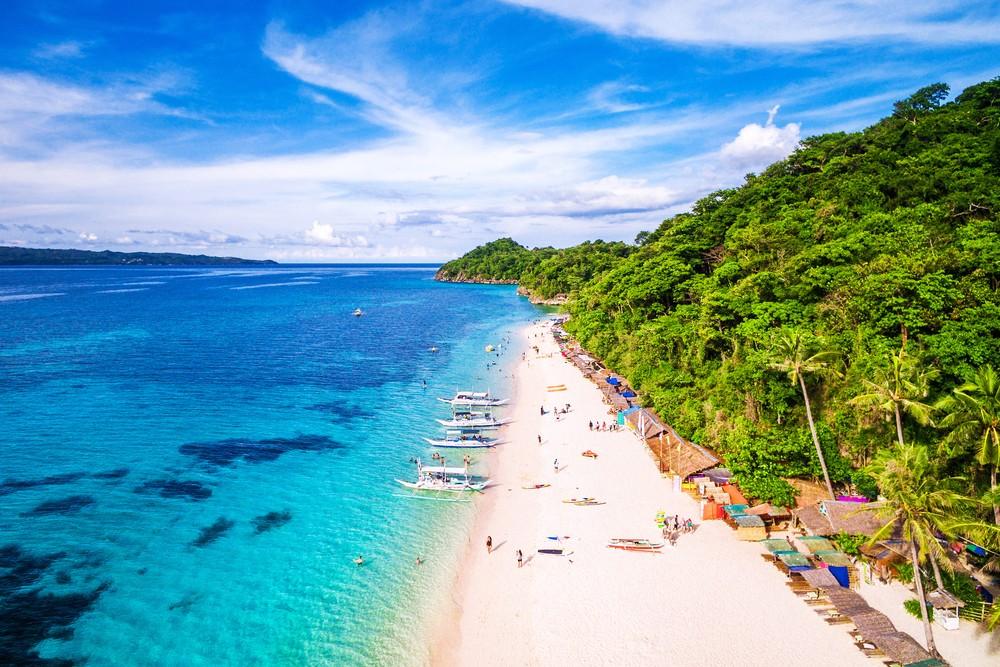Until a few years ago, the island state of the Philippines was hardly developed for tourism, but the Southeast Asian island paradise is slowly thawing. We are going on a round trip in the Philippines.
Completely unjustly, the Philippines is a much lesser-known holiday destination than other Asian countries, because the island state in the Pacific is hard to beat in terms of beautiful islands, picturesque beaches and cultural highlights.
The fifth largest island nation in the world has a turbulent past and has been independent since 1946 and is now home to over 105 million people. A direct flight from Germany takes 14 hours, but it usually has to be changed again, for example in Dubai or Singapore.
Round trip Philippines – The most beautiful islands
The state of the Philippines comprises 7641 islands and archipelagos on an area of 343,000 square kilometers, which is slightly smaller than Germany, and the nature, culture and people of the different parts of the country are correspondingly diverse and varied.
Palawan
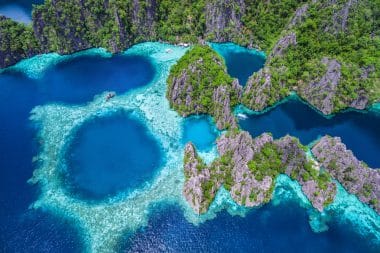
The island of Palawan and the surrounding region are hard to beat in terms of natural beauty. Many small islands and archipelagos, some of which are hardly larger than a rock jutting out of the sea, form a tropical dream landscape here, which is often only accessible by boat and is still untouched by mass tourism.
A highlight of this region is the island of Calauit with its African animals, because during the Marcos regime, 104 African wild animals were settled here as a gift from Kenya, which coped very well with the climate on the island and have multiplied and become feral. Today, you can observe wild giraffes, zebras and impalas on a jeep safari in the middle of Southeast Asia. An experience you won’t soon forget
Boracay Island
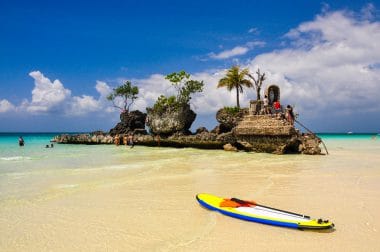
Much more touristy is the island of Boracay , which with its white sandy beaches has probably the most beautiful bathing opportunities in the Philippines, perhaps even in the whole world. White Beach and Diniwid Beach are particularly gorgeous. In 2018, the island was closed to tourists for 6 months to give nature time to recover. In the meantime, the island is open again and the colorful life continues.
Bantayan Island
Located at the northern tip of the much larger island of Cebu , Bantayan Island is also a dream beach destination in a class of its own. With palm-fringed white sand beaches such as Sugar Beach or Alice Beach and the Spanish colonial buildings in the island’s interior, Bantayan has something for everyone. Today, the island is mainly home to luxury resorts and upscale accommodation. A special highlight of the island is also the picturesque Ogtong Cave .
Sights on a round trip Philippines
The capital Manila and the Fuerza de Santiago
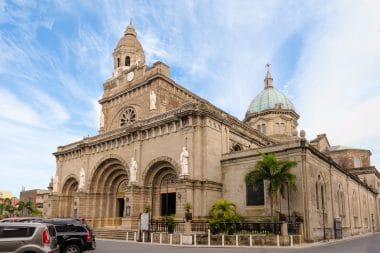
About 13 million people live in the megacity of Manila and its surroundings and most visitors to the Philippines spend as little time here as possible. Nevertheless, the city has a lot to offer, especially a visit to the Fuerza de Santiago, a former Spanish fort from the colonial era. This is a good opportunity for visitors to learn more about the eventful past of the island state. The Spanish fort together with a small restored district are a must part of every Manila tour and revive a little of the spirit of the past.
The Simala Shrine in Cebu
Located on the beautiful island of Sabu , not far from Cebu, Simala Shrine is arguably one of the most extraordinary and unexpected places in the Philippines. Located high in the mountains of the island, it is a religious shrine dedicated to the veneration of St. Mary, which attracts countless visitors every year. The hustle and bustle in and around the complex is correspondingly dense, but due to its beauty, it should not be missed.
The underground river at Puerta Princesa in Palawan
About three hours from the island’s capital Puerta Princesa is one of the 6 UNESCO World Heritage Sites of the Philippines – the underground river. To discover the river, you must either book a tour with a tour operator or buy a permit from a government office. Once you have made it to the river, the visitor is greeted by a small underground world, a cave full of stalagmites and stalactites, which leads deep into the mountain. A true miracle of nature.
Rice Terraces in Banaue – The Steps to Heaven
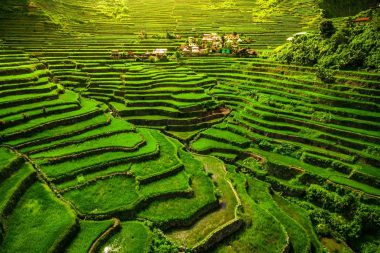
The landscape around Banaue in the north of the island of Luzon , which is characterized by rice terraces, is so picturesque that it has even made its way onto a Philippine banknote. The rice terraces built on the mountainside can be admired most beautifully from the Banaue viewpoint and are among the most beautiful in the world. Rice was cultivated here for the first time over 3000 years ago and over time thousands of rice terraces were built into the mountainside, which are now also called “steps to heaven” by the locals.
The city of Cebu – heritage from the colonial era
The colonization of the Philippine islands began in 1521, when the Spanish explorer Magellan first landed on the island of Mactan . The city of Cebu City is still a living relic from the colonial era and offers its visitors the former Spanish Fort San Pedro and the Catholic Santo Nina Church , among other things. The Taoist temple looks somewhat unusual here in the cityscape, which takes into account the large Chinese minority of the city.
Chocolate Hill on Bohol
The island of Bohol looks like a small piece of paradise, where visitors can expect not only the white sandy beaches that gently slope into the sea, but also a dreamlike interior of the island with green vegetation and winding rivers. A special highlight of the island are the so-called chocolate hills , which, according to legend, were created from the tears of a giant with a broken heart. The limestone hills, which are over 1200 and 30 to 50 meters high, turn brownish every summer as the grass growing on them dries out, which earned it the name “Chocolate Hills”.


